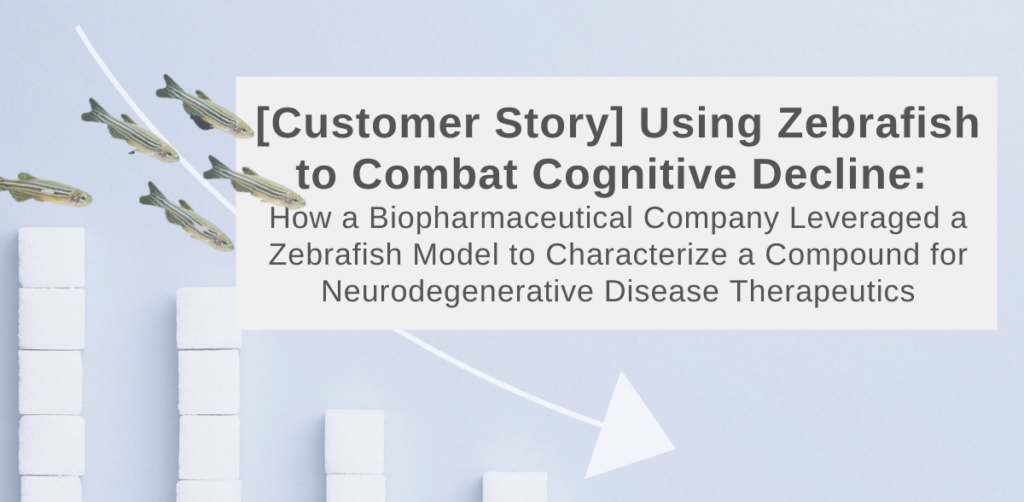Overview:
A Massachusetts biopharma company developing therapeutics for neurodegenerative diseases such as Alzheimer’s and Parkinson’s disease was able to accelerate their pre-clinical development by partnering with InVivo Biosystems to generate in vivo data in zebrafish. By using zebrafish, they were able to fast track the data generation needed for patent filings, grant applications, and follow on investments.
Challenge:
A Massachusetts biopharmaceutical company approached InVivo Biosystems wanting to know how they could use zebrafish as a model organism to comprehensively test the effects of their neurodegenerative therapeutics. They needed to gather robust data to validate their compound’s neuroprotective potential, with the ultimate goal of using it as a therapeutic for neurodegenerative disorders.
Solution:
Partnering with InVivo Biosystems, the Massachusetts biopharma took a multistep approach to their project. First, InVivo Biosystems utilized a chemical model in order to mimic the effects of neurodegeneration targeted by the Massachusetts biopharma’s therapeutic, Compound X. We then carried out an experiment in the zebrafish model to test the neuroprotective effects of Compound X. Using this paradigm, InVivo Biosystems was able to rapidly examine the molecular effects of the Massachusetts’s compound and generate robust data within weeks.
Download this Customer Story to learn more about how zebrafish can be used to accelerate drug development.





